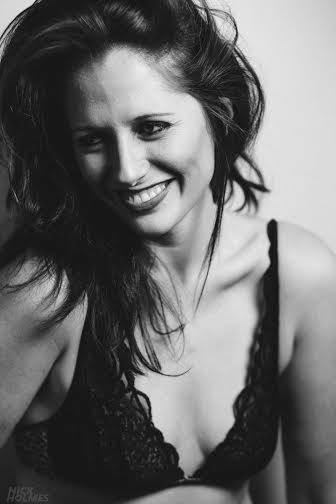#NerdsUnite: Big lights, big city, and a journey into confidence
#TalkNerdyToMeLover's Jordan Friedman

I feel like one of the things I haven’t really done here on this particular blog is explain what I actually do as a director of theatre. This is what I’ll devote this particular blog to. Bear in mind that there’s probably more than I can convey on here, but I’ll do my best here to explain, in a somewhat streamlined process, what I do as a director.
One of the first things I do is go in-depth into the script I’m working on. This is very important for my craft. At their core, directors are storytellers. They use the tools that they have to tell the story that the playwright wants to be told. You can’t do that unless you actually read the script and understand what the playwright has written. On the basic level, this requires reading the script. A lot. At more specific levels, I analyze specific details, including the overall story chart, the given circumstances that are present in this story, and perhaps the one that I spend the most time on, the details of the characters. Because these are the people that make up the story, I take my time to make sure I understand them right. For my current project, I’m writing down who each character is, what I consider to be their superobjective (Where as a character might have one objective in a moment, they likely have a superobjective, or overarching goal throughout the story), and the actions they take. I am someone who, as much as possible, directs by telling people what to do rather than what to be. To get concrete actions written down for these characters is crucial for me, it allows me to know how they respond to a certain situation and why.
After the script analysis comes aspects that may or may not be in my control. In the overall production sense, there’s getting your production staff and cast together. In the past, I haven’t always had control over these; for example in showcase work I often tend to have cast members chosen for me. When I do have control over these, I talk to potential designers and stage managers to see if they speak the same language that I do theatre wise and can create their best work under a certain set of circumstances. With actors, I’ll either have them read monologues or certain portions of the script that best define the character they’re interested in. I do this to see their overall acting ability as well as their ability to adjust to changes I may throw at them (On either end of my field, you have to be very adaptable). I then process over everything as much as I can and select the people who I believe will get me the best performance.
Then, the rehearsal process begins. Depending on the script and the circumstances of the show I’ve had some rehearsal processes last under 6 hours, while my most recent one is probably going to push at least 60. No matter how long it lasts however, I have a few key steps with what I do. First is what’s known as table work, or the actors sitting down at the table with scripts in hand, reading out loud and discussing what the text means to the actors and how they initially respond. From there I take those instincts and attempt to build their characters and their reactions to the story in front of them. This gives the actors a foundation of what they do, why they act the way they do and what is in the characters’ heads in the moments of the play. Once that’s done I enter blocking, which is simply having the actors on their feet and adding movement and pace to what was discussed in table work. This is not only important to complete the characters and their actions, but it also truly lets me see how everything works on stage and whether it plays out on the stage the way it was intended to be in table work. This also lets everyone get everything in their head the way they’re supposed to and correlate lines to actions and responses in order to get everybody in a state ready for performance.
Once that’s gone on for some time, and I’ve had meetings with designers on the side to discuss their work comes the joy that is tech week. This is often one of the more tiring process of being a director as you have to work to get the technical aspects of the show together with the performance. The lighting, set, costume, and sound elements will be loaded into the theatre and I’ll often make sure to test them before actors come into the space. Then there’s the work of getting the actors used to the space and balancing the timing of the actors and the tech elements, along with overall story telling with everything together. With last minute refinement and changes that can be made as well, this can be a tiring week in the process, particularly as this is the week to make sure everything is right and ready to go. However once it’s done and the product is complete, I consider my job done and let the piece carry its course. It’s something I consider to be a fulfilling end after a long process.
While there’s more to the process than what’s listed here, there’s a brief look at what it is I do. Perhaps when there’s a way to show specific examples on here I can take what I show and put it into context. But for now I hope you enjoyed this little peek into my world. Until next time.
Nerd responsibly.
-Jordan





 Thursday, October 18, 2012 at 6:00AM
Thursday, October 18, 2012 at 6:00AM
Reader Comments